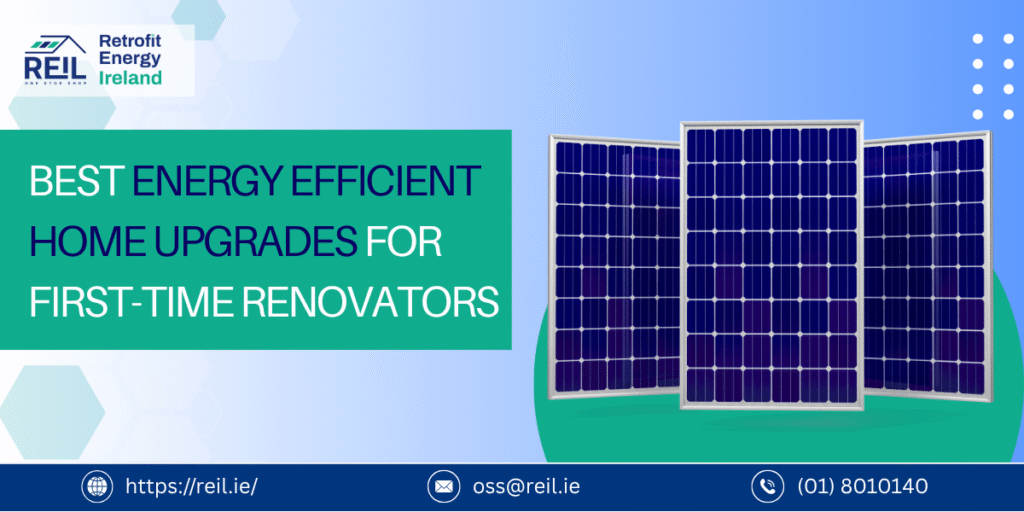
Energy Efficient Home Upgrades
You desire silence in the house, a reduced bill, and improved indoor air. One should begin with the building envelope, then proceed to heating, water heating, and controls. This order is important since sealing and insulation enhance the reward of all your system upgrades.
The best energy efficient home upgrades, including Home Air Tightness Testing, will show the points at which your house is leaking. The blower door measures how much the home infiltrates, making you know which elements to close and the level to which the home must be closed to be comfortable and safe.
Begin with a plan and a test
The calibration fans, manometers, and infrared scans that are used by the auditors during the testing to identify the air leakages in the attics at attic hatches, rim joists, and utility penetrations. Results inform directional air sealing and aid in deciding whether mechanical ventilation is required or not.
In case of renovation, have one test when the envelope is mostly sealed and another one towards the end. This method identifies concealed leakages before finish work is finished and can confirm the performance at the end.
Irish retrofit providers stress the airtightness at the early design and before completion. The same lesson can be used in any place. Prepare plan materials and seal specifications to be used by the trades in order to know what they should preserve and at what time they should test it.
Best Energy Efficient Home Upgrades in the right order
1. Sealing of air and insulation of the attic
Close the top plate seams, penetrations, and utility chases. Add attic insulation to specifications. Air sealing and insulation can result in up to ten percent savings in many homes. Comfort is enhanced, drafts are reduced, and your HVAC operates less.
Apply authorized sealants or hard-dollar seals. Insulation Fibrous alone is not an air barrier. Check lighting, ducting, and flues gaps around lighting, duct, and flues based on the Department of Energy checklist and test with a post seal.
2. High-performance windows or storm windows
Installing new, efficient windows instead of the old single-pane units will reduce energy waste and minimize solar energy and UV radiation. Certified products save an average household about twelve percent of its utility bills. Storm windows may be an interim measure that is cost effective.
3. Heat pumps to clean the heating and cooling
The modern heat pumps provide heating and cooling power in a single unit. They reduce energy consumption during all seasons and go hand in hand with a tight envelope. ENERGY STAR Home Upgrade recognizes the heat pumps as one of the fundamental comfort and savings indicators.
4. High efficiency water heating
The second biggest energy consumer at home is the water heaters. The heat pump water heaters can save an average household of four an estimated five hundred dollars a year in terms of costs, and at the same time, more in the form of noise and the ability to recover the hot water.
5. Intelligent thermostat and controls
About 50 per cent of the normal energy bill is spent on heating and cooling. Smart thermostats save energy and organize times according to occupancy and weather conditions. Small control upgrades achieve significant savings without significant construction.
6. External comfort and lighting
LEDs consume much less energy and have more durability. There is good lighting in exterior pathways and entries with sensors and critical aiming to enhance safety and lessen glare. Lighting is often combined with envelope work in many retrofit programs to increase the overall performance.
Home Air Tightness Testing basics for renovators
What it measures
A blower door test is a record of the air changes per hour at fifty pascals, which approximates a constant wind blowing on all sides of the house. Reduced figures show stricter building. Ventilation choices and right-sizing of HVAC equipment can be directed by the test.
Why it matters
Leakages in the air cause heat loss, drafts, movement of moisture, and indoor air quality problems. Less leakage results in less energy use, temperature stabilization, and comfort. Pre and post air-sealing testing determines progress and assists in code standards.
How to prepare
Shut exterior windows and doors to the way they would be used normally. During the test, switch off the combustion appliances. Make the auditor have access to the attics, basements, and knee walls so that they can inspect and seal critical areas safely.
A step by step path for first timers
- Make an energy audit with Home Air Tightness Testing at the front of your project. Request a prioritized list with cost parameters and anticipated savings so that you can have upgrades to be budgeted in phases.
- The attic, foundation, and penetrations have seal leaks. DOE guideline and confirm with a post-seal test.
- Install insulation in the attic and cover air barriers when doing finish work.
- Install the most problematic windows or put storm units in areas where it is still not possible to fully replace them.
- Choose a right sized heat pump and a heat pump water heater to take advantage of the tighter envelope.
- Install a smart thermostat and replace lighting with high-efficiency sources with controls in priority areas.
Conclusion
Prepared to design the best energy efficient Home Upgrades for energy saving during your remodel. Begin with the Home Air Tightness Test and a map of the room by room leaks. Select envelope, heating, and water heating improvements that can fit your budget in the ENERGY STAR Home Upgrade pathway. Then, have one end of the test to validate the gains and save the results in your project file.
Your plan can be honed by studying retrofit programs in other countries. Check the way one stop shops package airtightness, insulation, and heat pumps to create a series that will be effective in your house. Modify the concepts and make them local to have a strong, comfortable, and efficient home.


